IDC Staff • January 6, 2025
Why DEIA is More Important Than Ever in 2025
As we step into 2025, the significance of Diversity, Equity, Inclusion, and Accessibility (DEIA) continues to grow. Organizations, communities, and individuals are recognizing that DEIA is not just a set of values but a necessity for sustainable growth, innovation, and social cohesion. Here are the key reasons why DEIA is critically important in 2025:
1. Changing Workforce Demographics
The global workforce is more diverse than ever, with employees spanning various generations, cultures, and abilities. According to recent studies, organizations that embrace DEIA are better positioned to attract top talent, enhance employee engagement, and reduce turnover. In 2025, fostering an inclusive workplace is a competitive advantage that helps companies meet the expectations of a dynamic and diverse labor market.
2. Enhanced Innovation Through Diversity
Diverse teams bring varied perspectives, which lead to enhanced creativity and problem-solving. By prioritizing DEIA, organizations create environments where employees feel empowered to share ideas. This results in innovative solutions that address complex challenges, making businesses more adaptable and forward-thinking.
3. Addressing Systemic Inequities
Despite progress, systemic inequities persist across industries and communities. DEIA initiatives in 2025 aim to dismantle these barriers, ensuring equitable opportunities for all. This involves addressing issues such as pay equity, representation in leadership, and access to education and training for underrepresented groups.
4. Legal and Ethical Obligations
As laws and regulations surrounding DEIA evolve, organizations are held accountable for creating equitable and inclusive environments. Beyond compliance, prioritizing DEIA demonstrates a commitment to ethical business practices, strengthening trust among stakeholders, customers, and employees.
5. The Rise of Accessible Technology
Technological advancements in 2025 emphasize accessibility. From AI-driven tools that promote inclusive hiring to digital platforms designed for individuals with disabilities, technology plays a pivotal role in advancing DEIA goals. Organizations investing in accessible tech not only comply with standards but also unlock the potential of a wider audience.
6. Consumer Expectations
Consumers are increasingly supporting brands that align with their values. DEIA has become a key factor in purchasing decisions, with customers demanding transparency and accountability. Companies that authentically embed DEIA into their operations and marketing efforts build stronger, more loyal customer relationships.
7. Global Challenges Require Unified Solutions
In a world grappling with climate change, geopolitical tensions, and economic disparities, DEIA fosters collaboration and unity. By bringing diverse voices to the table, we can develop holistic solutions to global challenges, ensuring no one is left behind.
8. Mental Health and Well-Being
Inclusive workplaces contribute to better mental health outcomes. Employees who feel valued and respected experience lower stress levels and higher job satisfaction. In 2025, prioritizing DEIA is synonymous with fostering a culture of care and support.
Conclusion
DEIA is more than a buzzword; it is a strategic imperative for organizations and societies in 2025. By embedding DEIA principles into policies, practices, and everyday interactions, we pave the way for a more equitable and prosperous future. Whether you are a business leader, educator, or community member, embracing DEIA is an investment in a better tomorrow.
Share This Article!
Disclaimer: Content on this blog is authored by multiple sources. While we do make every attempt to proofread and fact-check, unless authored our staff, the views expressed do not necessarily reflect those of the Institute for Diversity Certification (IDC), Inc.
More Insightful DEIA Blogs

Diversity tokenism occurs when a company adds people from different backgrounds to look inclusive without empowering them or supporting this practice. This approach often leaves employees feeling only there to “check a box,” which can breed frustration, isolation and distrust. When you prioritize authentic diversity, equity and inclusion (DEI), your team gains fresh perspectives, innovation flourishes and employee satisfaction grow. Plus, creating a space that champions this advocacy boosts your reputation as an employer of choice, attracting top talent and strengthening loyalty. What Is Diversity Tokenism? Diversity tokenism occurs when you include people from underrepresented backgrounds just to look diverse without providing real support or growth opportunities for these individuals. It’s a surface-level approach that misses true inclusion, even though fairness matters deeply to your team. In fact, 88% of U.S. workers believe fairness is crucial in their workplace. This approach harms individuals by making them feel undervalued and isolated, leading to low morale and a lack of belonging. For your company culture, tokenism fuels distrust, disengagement and a divided workforce. Embracing authentic diversity, however, fosters trust, innovation and a positive environment that benefits everyone. Recognizing Tokenism vs. Genuine Inclusion Knowing the difference between real inclusion and tokenism is important if you're trying to build a diverse workplace. Tokenistic practices often show up when you hire one person from a marginalized group just to “check the box,” without giving them real influence, support or growth opportunities. You might see it in companies that post about diversity online but have no representation in leadership or no inclusive policies. On the other hand, truly inclusive environments go beyond appearances — they prioritize equity, psychological safety and accountability. They ensure diverse voices are heard at every level, provide mentorship, create safe spaces for feedback and invest in ongoing DEI training. Why does this matter? Because today’s customers are paying attention. In fact, 84% of consumers say a company's experience is just as important as its products or services. If your team doesn’t feel valued and represented, your customers will notice too. 5 Tips for Creating an Authentically Diverse Environment Creating an authentically diverse environment builds a workplace where everyone feels valued and empowered. These five tips will help you go beyond tokenism to foster a culture of genuine inclusion and respect. 1. Develop a Comprehensive DEI Strategy Thoroughly assess your current practices to understand where your organization stands on diversity and inclusion. Set measurable goals and key performance indicators (KPI) aligned with your vision or an authentically diverse workplace so you can track real progress over time. Involve diverse voices in strategy development to ensure your initiatives genuinely reflect the needs and perspectives of all team members. 2. Foster Inclusive Leadership Offer training on unconscious bias and inclusive behavior so your leaders understand how their actions impact team culture and dynamics. Holding leaders accountable for DEI initiatives is crucial, so ensure diversity goals are part of their performance metrics and regular evaluations. Mentorship and sponsorship programs are another strategy because they allow everyone to advance in their careers and feel supported in their growth. 3. Recognize and Respect Diverse Belief Systems A manager may make the mistake of trying to tailor their approach to a specific demographic, researching how to appeal to a homogenous group of people. However, doing so perpetuates ongoing stereotypes about these groups and limits the ability to truly connect with the individual. It’s important to get to know and respect individuals for their own beliefs and ethics, versus assuming homogeneity in beliefs based on demographics. 4. Implement Unbiased Hiring and Promotion Practices Use blind resume screening techniques to zero in on skills and experience, keeping any bias from the hiring process. Diversify your interview panels to bring fresh perspectives and improve the quality of candidate evaluations. Structured interviews are also a great way to boost reliability and validity in assessments as they create a fair process that builds trust with candidates. When promoting, establish clear, merit-based criteria, so your team knows what it takes to grow within your organization. 5. Create Safe Spaces for Open Dialogue Create Employee Resource Groups (ERGs) to give your team a safe space to connect, share experiences and advocate for positive change. Conduct regular listening sessions and surveys to stay in tune with your employees; feelings and identify areas where you can improve. It’s also crucial to encourage and protect whistleblowing on DEI issues. It empowers team members to voice concerns without fear. 6. Integrate DEI Into Company Culture Integrate DEI principles into your company values and mission statements to show that equity and inclusion are core priorities. Celebrate diversity through events and recognition programs highlighting your team's unique backgrounds and contributions. Keep DEI education and training ongoing for everyone, as 53% of employees who've participated in these programs found them very or somewhat helpful. Building a Lasting Culture of Inclusion and Growth Authentic diversity and inclusion bring long-term benefits like stronger team morale, enhanced innovation and a more resilient company culture. HR professionals have the power to lead the charge — take the first steps to build a workplace where every voice truly matters.
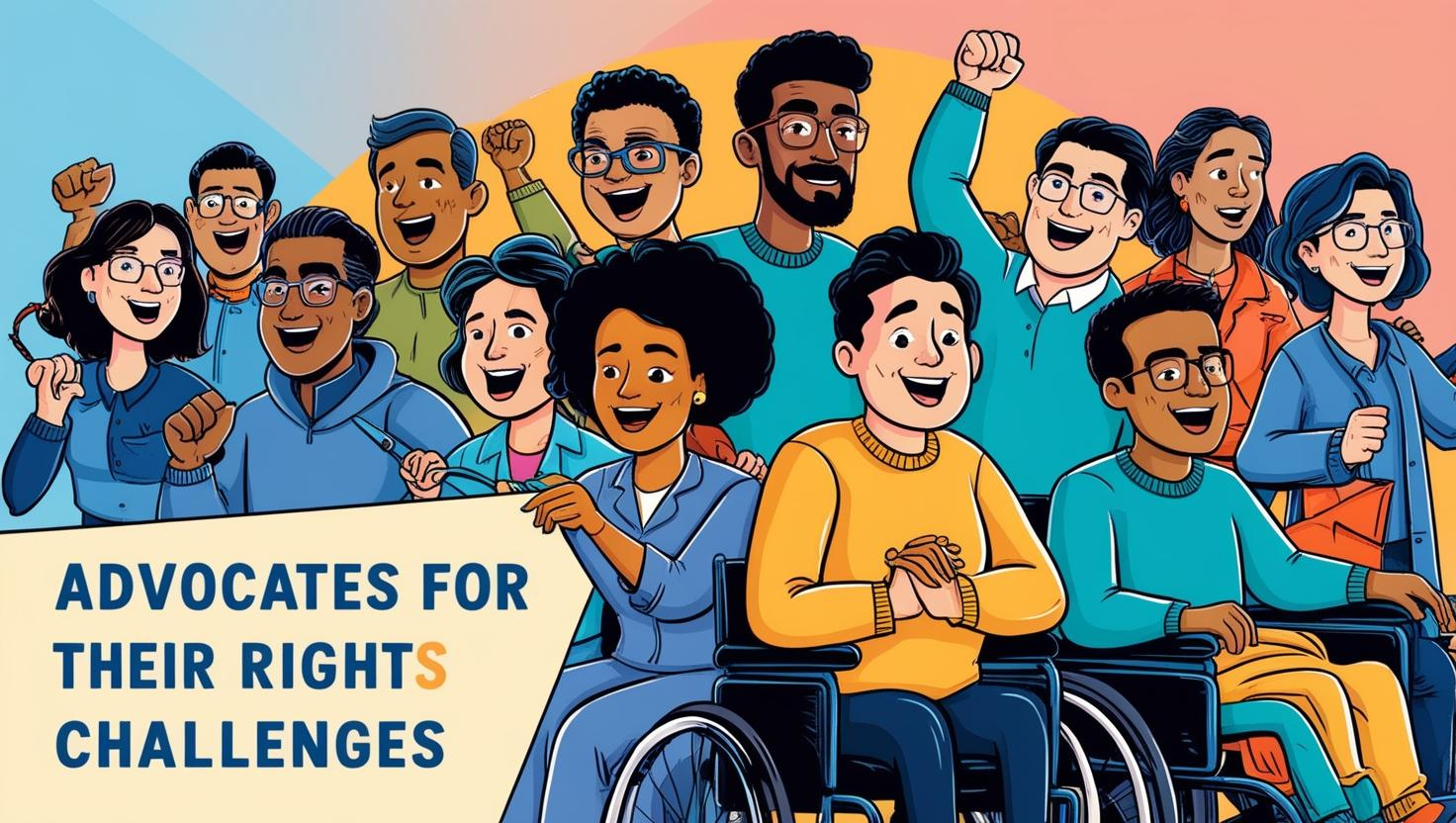
Recent budget cuts to diversity, equity, inclusion and accessibility (DEIA) programs mean leaders are left to figure out how to move forward with their initiatives in new, creative ways. Most businesses want a diverse workforce made up of individuals from all walks of life, as it brings a strong company culture and provides the ability to pivot in any situation and find a solution. However, adding programs costs money, and smaller brands may not have the funds to move forward. Consider these ways to protect workers’ rights in the face of budget constraints. What Obstacles Do Companies Face in Protecting Disability Rights? In addition to the challenges, you already face in protecting disability rights, like ingrained attitudes and organizational policies, recent economic and policy shifts may add even more. President Trump signed an executive order on January 22 to slash government-funded DEIA budgets. Companies already financially struggling may take the move as a signal to end private programs. Most organizations want to be fair and have a mix of employees from all backgrounds and abilities, but the cost of a focused effort may be too much to bear for smaller firms. Does DEIA Protect People with Disabilities? Although DEIA programs include workers with disabilities, companies can sometimes fail to focus on the aspect as much as diversity, equality and inclusion. Another thing that might hold businesses back is that not all conditions are apparent at first glance. Things such as mental illness can take a toll on a worker without reasonable accommodations. What can management do to ensure everyone feels part of the company culture? A few minor changes can make a job more accessible for people with disabilities and allow them to thrive in the workplace. What Can Companies Do to Improve Diversity and Inclusion for People With Disabilities? Paying attention to the details that make your building and policies more accessible and inclusive creates a welcoming atmosphere for all abilities within your organization. Redefine Disability Spend time going over your policies regarding accommodations. Does anything need to be tweaked? It's wise to include someone with a disability on the team who reviews current policies and suggests changes. How do you handle conditions that are more complex to identify, such as mental illness or chronic pain? Almost 50% of Americans receive a diagnosis of mental illness by 18, and around 25% will endure serious impairment as a result. In adulthood, those with unseen disabilities may feel overlooked and out of touch. Finding ways to include them and show you care can reduce stress. Tap Into Inexpensive Training Resources The costs of educating human resources (HR), leadership and employees can add up. Fortunately, many educational institutions offer free programs for anyone interested in embracing DEIA in the workplace. Additionally, many online platforms offer courses focusing on disability rights and inclusion strategies, which often include certifications that can enhance staff’s professional development without straining your budget. Further, consider reaching out to local advocacy organizations that specialize in disability rights. They may offer workshops or training at little to no cost, providing valuable insights and practical tools to foster a more inclusive environment, even without specific DEIA measures in place. Seek to Reward Unseen Efforts Use ongoing meetings as recognition ceremonies. Handing out rewards is great for overall morale and makes them feel valued. Unfortunately, many employees contribute effort behind the scenes and may feel overlooked when flashier jobs get all the praise. Make sure you brainstorm with all the people behind a successful project. Those who create the materials to drive the profitable marketing campaign are equally as important as the person in front of the camera or head of the department. Communicate With Employees If you've hired a diverse crew, one of the best ways to ensure you're protecting disability rights and serving the needs of your workers is to have a conversation with them. When you choose who to talk to, remember there are numerous types of conditions. Talking to the person in the wheelchair might seem an obvious choice, and one you should look at, but the staff member struggling with anxiety can be just as crucial to your input. Once you have an idea of the problems each employee faces, create teams to brainstorm how to solve them. Some solutions could be as easy as installing more wheelchair-accessible ramps, while others will demand complex solutions to put the worker at ease and ensure they can do their job without fear of repercussions. Your Brand’s Diversity Reputation If you want your company to be known for inclusivity, you should do more than go down a checklist of items to cover. Instead, think through every policy and how it might impact each staff member individually. Talk to those you worry might be affected negatively and brainstorm solutions. By prioritizing inclusion for all people in your employ, you'll create a team of loyal workers and develop a reputation for being fair-minded and accommodating.

Thoughtful Diversity, Equity, Inclusion, and Accessibility (DEIA) efforts can remove societal barriers, reduce stigma and help affected parties feel empowered and visible rather than frustrated and overlooked. As someone tasked with implementing and improving these inclusion efforts, how can you track what’s going well and identify problems that may cause unintended consequences — such as isolation — for employees with disabilities? How DEIA Efforts Can Inadvertently Isolate Employees While most businesses implement DEIA efforts with the goal of truly benefiting employees, these efforts can inadvertently lead to isolation or alienation for workers with disabilities. Some ways that DEIA efforts can backfire include: One-size-fits-all solutions: Implementing standardized accommodations without considering individual needs can make employees feel overlooked. A generic set of resources might not address specific challenges an individual faces, or might perpetuate stereotypes about the disability, which in turn can lead to feelings of frustration and exclusion. Tokenism: When DEIA efforts focus on meeting diversity quotas or showcasing diversity for PR purposes, employees with disabilities may feel like they are being used as tokens rather than valued team members. Lack of input: If DEIA initiatives are implemented without genuine engagement and input from employees with disabilities who are directly affected, the efforts may miss the mark, and employees may feel that their voices are not heard or valued. Overemphasis on differences: While its important to acknowledge and celebrate diversity, an overemphasis on differences can sometimes lead to segregation. Creating separate programs or spaces for employees with disabilities without integrating them into the broader organizational culture can reinforce a sense of "otherness." Failure to truly address systemic barriers: DEIA efforts that focus solely on surface-level changes without addressing systemic barriers can leave employees with disabilities to continue dealing with challenges in fully participating in the workplace. How to Evaluate DEIA Efforts for True Inclusion So how can businesses truly support inclusion for all employees? The following are several tips for creating successful DEIA initiatives that don’t come across as demeaning or isolating for employees. 1. Track and Publish Relevant Data Tracking data and making it available for review is an excellent starting point for truly inclusive DEIA efforts because it allows people to rely on hard facts rather than assumptions and guesswork. Some organizational leaders may believe their organizations excel at supporting workers with disabilities, but the data could tell a different story. Consider tracking key performance indicators such as: How well the organization hires and retains employees with disabilities. Whether those parties feel comfortable speaking about their experiences. If people with disabilities participate in career development programs. How successfully employees with disabilities achieve workplace goals. Whether accommodations help workers perform at their best. Anonymous surveys can help you gauge many of these things. However, you should also be supportive of self-disclosure so that employees understand they can come to you with both wins and concerns. A 2024 study revealed a median self-identification rate of just 5% for new hires mentioning their disabilities. Implementing a voluntary and confidential disclosure process could give you a more accurate picture of workplace experiences for employees with disabilities. The same research indicated that 45% of companies now publish diversity reports containing disability data. That’s a significant improvement from 2023, when only 24% of respondents indicated they published such reports. 2. Rely on Lived Experiences While Making Accommodations The daily challenges faced by people with disabilities vary greatly depending on their circumstances. However, one crucial thing you can do is listen to those directly affected to understand which accommodations will help them most. Sometimes, working through an employee’s accommodation requests is all about collaborating to see which solutions would work best for them based on factors like workplace layout and specific employee duties. In 2024, the Department of Labor made it easier for employers and other interested parties to get feasible accommodation ideas by providing a list of options that worked well in the past. The resource contains more than 700 accommodation ideas that employees and their employers can use. A 2024 study by Deloitte indicated that working from home is more accessible for 48% of employees with disabilities. However, only 9% reported they were permitted to work from home every day despite the numerous benefits. Fifty-seven percent of respondents said it is easier for them to get work done in their homes, while 55% said working from their residences reduces health threats. Such arrangements can also facilitate access to necessary care, as 46% of those polled mentioned. 3. Review Any Negative Impacts or Shortcomings Your organization should also assess documented instances of failures to abide by relevant laws. For example, a business could begin by examining any documented cases where the company did not meet Americans with Disabilities Act (ADA) compliance. Businesses that fall short of ADA laws and regulations may get fined up to $75,000 for their first offenses, with the amount rising to $150,000 for future violations. Responsible business leaders should treat these first infractions as a wake-up call by reviewing documentation of the fines and what was done to better adhere to guidelines in the future. Some of the negative impacts of noncompliance are less obvious than steep fines, though. Your company’s messaging can either reassure employees with disabilities that their lives and experiences are valued or cause them to feel more isolated. Examine corporate messaging and how it reflects impacted parties. Sometimes, small changes can make a big difference. Referring to someone as “a wheelchair user” rather than someone “confined to a wheelchair” is an example of empowering language. Your company’s communications showcase its overall values. Whether creating a press release, social media post or other piece of distributed information, the language should ideally reflect people of all abilities. Give employees a channel to express concerns over instances of noninclusive language, physical barriers or other problems. This feedback can highlight areas the business should focus on to create positive impacts for those with disabilities. 4. Determine Whether Accessibility Is Part of the Culture Those responsible for creating and upholding accessible and inclusive work environments should also consider the extent to which accessibility is a cultural norm for the company. People with disabilities are more likely to have smoother, supportive experiences if they can seamlessly integrate into the workplace with as little friction as possible. Estimates indicate approximately 1.3 billion people worldwid e have significant disabilities. People who design mobile apps and other products with large target audiences understand the importance of including inclusive characteristics and features — such as keyboard- and gesture- based navigation, legible fonts and logical navigation patterns — which make experiences more enjoyable for everyone. Similarly, an inclusive culture makes workplaces more nurturing by allowing people with disabilities to be their authentic selves. Take a top-down approach by ensuring the company’s leadership is fully on board with making accessibility improvements and investments. Additionally, training programs can help people develop empathy and negate stereotypes. Inclusion Is a Long-Term Commitment As you evaluate the impact of current DEIA efforts and planned enhancements, adopt the right perspective by remembering to treat the work as a priority rather than a box-checking exercise. Acknowledging that your workplace may have room for improvement is the first component to making progress.
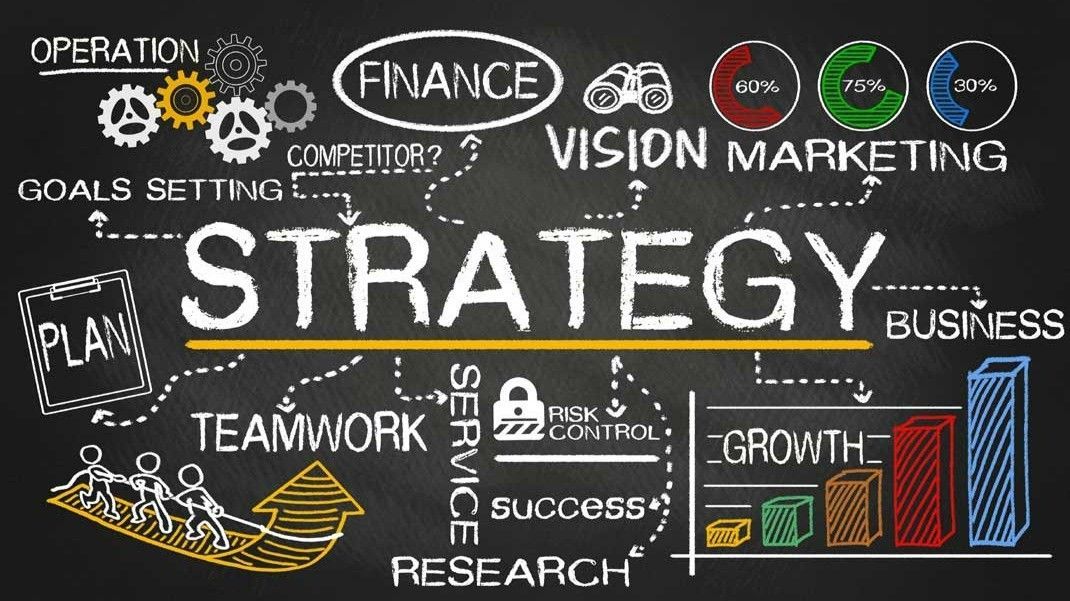
Kendrick Lamar's SuperBowl performance was ingenious. From culturally relevant music to subtle and not-so-subtle messages, he made an impact on the world's biggest stage. Until people began talking about it, I was oblivious to the indirect messages. For example, I did not remember Serena Williams doing the Crip walk at Wimbleton in 2012, and all of the backlash she received. I totally missed the cue that Samuel L. Jackson was "Uncle Sam," similar to his Django Unchained character. Uncle Sam, as a older Black man asked, "Don't you know how to play the game?" as if to make sure that Kendrick Lamar, a younger Black man, knew how to play the game of making Whites feel comfortable by code switching, compromising, and disassociating from Black culture. I also did not understand the imagery behind the dancers forming a divided American flag with a Black man, Kendrick Lamar, in the center of the division. Beyond a few songs, Kendrick Lamar orchestrated a loaded but brilliant performance. As we reflect on what's next for the Diversity, Equity, Inclusion, and Accessibility industry, it is imperative that we understand what's really happening and apply a lens of creativity to our strategy. Currently, we are too reactive and there is a segment of the population who's energized by our shocked and angry reactions. Further, the opposition's playbook is rooted in a skewed or inaccurate version of history; there is no vision for the future. The anti-DEIA movement is designed to overwhelm us with chaos, confusion, and misinformation, as well as to sow division between each identity group. Need examples? The SCOTUS Affirmative Action decision used Asian-Americans to make the case for discrimination in College Admissions with Black and Latino students only. Anti-DEIA messaging stretches this decision to say that SCOTUS rendered all Diversity efforts illegal . That's not true. The "mass deportation" efforts that use camera crews to scare immigrants, although the current rate of deportations will be lower than Joe Biden's 2024 numbers. Why are legal immigrants cheering on deportation? For some of these Americans, an outsider is an outsider, regardless of your legal status. The "Department of Labor" statistic that only 4% of Blacks benefited from DEIA programs. As a result, Blacks were fuming at White women and angry at the DEIA myth. I tried to track down this so-called "Department of Labor" data and the only thing that I could find was a 1995 statistic pertaining to Affirmative Action , which is different from DEIA. The 4% number sounded alot like the data in Figure A, that has been debunked by Diversity experts. As you can see, the 76% number has been repeated in this recent "Department of Labor" statitistic as the percentage of White women that have benefited from DEIA. It's also interesting that the title changed from 'Chief Diversity Officer Statistics by Race' to Here's Who Benefited Most from DEIA. The reason Figure A was debunked is because we don't know how this data was gathered; whether companies who did not have a Chief Diversity Officer simply named their HR Officer as the Inclusion lead; whether this data is regional, national, or international; how many companies participated in this survey; what is the timeframe or date for the data or data collection; why Affirmative Action labels (race and gender) were the only data sets collected for DEIA; or can this data be corroborated by other studies? FIGURE A. DEBUNKED DIVERSITY DATA Let's be careful NOT to go down the rabbit hole with the divisive data, or misinformation, that could be disseminated over the next few years. We need to ask logical questions about the reliability and veracity of the studies. For example, the North Carolina Department of Labor decided to dismantle their Diversity work based on a sloppy study that was published by Rutgers University. In respect to sustaining our work, there are certain questions we must ask: How do we get out of politics and go beyond the business case? Currently, we HOPE every 4-8 years, Diversity work will have a different trajectory. Hope is not enough. So long as Diversity is on the ballot, we are placing our hands in a volatile movement that seeks to retain power in the hands of a few. The same thing with the business case-- CEO's, University Presidents, Nonprofit Executive Directors, Boards, and Shareholders have the power to determine whether Diversity comes or goes. Once again, the impetus for Diversity can shift with changes in leadership. How can we ensure Diversity, Equity, Inclusion, and Accessibility becomes the human-centered element that balances global technological advancements? In a knowledge economy, user experiences are king. Diversity presents a global opportunity to capitalize on understanding user nuances; managing and collecting data that leads to better insights; ensuring that systems are accessible; and delivering safe, truthful, and transparent outputs that result in fair outcomes. Presenting Diversity from this vantage-point can empower our efforts to recruit and engage the next generation of leaders. How do we consistently tell the stories about our impact? It's amazing that so many people still do not know what we do or understand what Diversity is. One thing is for certain, for the first time, people are finally hearing about the terrific work that Diversity, Equity, Inclusion, and Accessibility leaders perform. But it's too late. We're telling these stories as companies/government agencies lay off workers! Who knew that we did all of these meaningful things? Most folks simply listened to anti-DEIA talking points, which neither explained what Diversity is, nor contributed to a dialogue about how it benefits average every-day people. Where do we go from here? There are countless articles saying: DEIA is dead. It is not. Even the NY Post concedes that the anti-DEIA camp can't stop Diversity. Nevertheless, our intent is not simply to keep it going; we want it to thrive. Diversity is the future; it does not center the past. From the demographics and removing barriers to problem solving and innovation, organizations function best when they value inclusive excellence in the workplace and marketplace. Our work must also address how to engage those who felt left behind in our Post-George Floyd push, as well as ensure that different groups can acknowledge their uniqueness while moving forward in unity. Notice that the anti-DEIA needle continues to shift. It went from DEI must die and DEI is dead, to everyone's quitting DEI and DEI is responsible for every disaster. While the anti-DEIA narrative is becoming more tactical, we must address the long-term implications of our work and the means by which we will achieve our goals. This is strategic. To focus on strategy means that we are going to be intentional about: FIGURE B: ACHIEVING LIBERATION IN EMPLOYMENT, EDUCATION & ENTREPRENEURSHIP Removing the props and barriers that prevent true equality and full inclusion (see Figure B); ensuring that everyone is given a fair opportunity; Continuing to integrate and align Diversity, Equity, Inclusion, and Accessibility throughout organizations, systems, and policies; Preparing our organizations for a future where intersectionality, or overlapping identities, will be more important to one's experiences than their race or gender alone; Acquiring better data and insights about changing Behaviors, Expectations, Attitudes, and Needs, as well as applying this new knowledge to all aspects of the business including marketing, technology, research & development, talent management, customer service, investor relations, etc.; and Measuring how Diversity impacts business performance and the bottom line using data analytics. This includes influencing reductions in discrimination, harassment, and retaliation; improving end-to-end experiences for workers and customers; designing fairness initiatives (such as fair pay, flexible work, paid time off, etc.); and prioritizing accessibility. In the words of Kendrick Lamar, "The revolution 'bout to be televised, you picked the right time but the wrong guy." Get more creative-- we're the right people and this is the best time. "Stop Being Reactive" is Part I of a series. Make sure you read what's next for the Diversity industry.
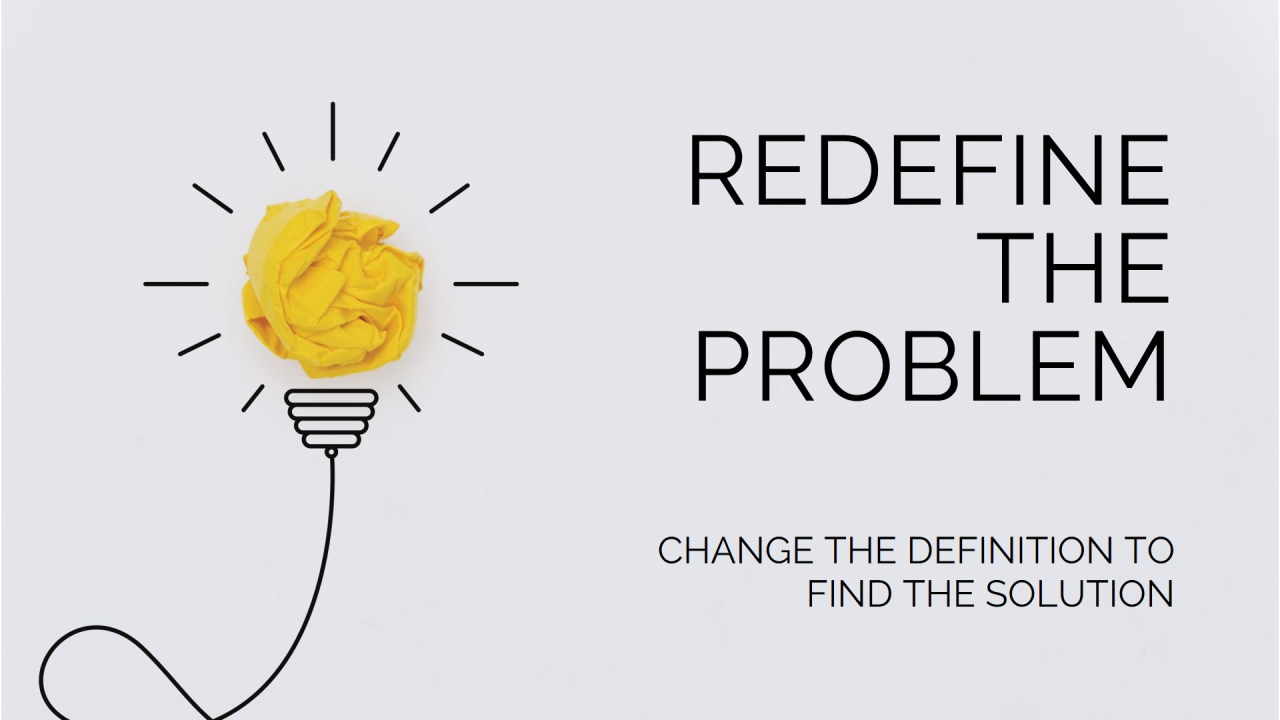
To Solve a Tough Problem, Change How You Define It Diversity goes beyond polarizing concepts such as Black/White, Male/Female, or Gay/Straight. This outdated approach excludes individuals who do not fit neatly into these categories, and the language itself can be divisive in a Knowledge + Experience economy. Today, people identify as unique individuals with intersectional identities, adding layers to their behaviors, expectations, attitudes, and needs. Forward-thinking organizations are addressing this evolving business reality by redefining Diversity and applying the next generation of management skills. The Competitive Edge of DEIA In today's competitive landscape, elevating Diversity, Equity, Inclusion, and Accessibility (DEIA) in the workplace is a strategic advantage. Companies that fail to embrace DEIA effectively risk alienating talent, customers, and stakeholders. However, those who implement it thoughtfully stand to gain innovation, engagement, and sustainable success. The difference between success and failure lies in the ability to shift perspectives, redefine challenges, and implement human-centered solutions. Transforming Challenges into Opportunities For over 15 years, the Institute for Diversity Certification (IDC) has been at the forefront of DEIA transformation. By fine-tuning research-based materials, global case studies, and high-end technology, IDC helps organizations use DEIA strategies to increase profitability, reduce risks, and achieve organizational goals. IDC empowers individuals and organizations to unlock the untapped potential of diverse talent while enhancing experiences for all stakeholders. Our groundbreaking programs equip professionals with the knowledge, tools, and strategies to create inclusive environments that foster respect, engagement, and real value. Moving Beyond Divisiveness to Innovation It is time to move beyond outdated narratives and embrace diversity in its full complexity. Say goodbye to divisiveness and barriers to effectiveness—say hello to big ideas, human-centered solutions, and transformative leadership. IDC inspires innovative leaders to reshape workplace cultures, design accessible spaces, and implement fair practices that drive results. Whether you are an individual professional or an organization ready to take DEIA to the next level, IDC provides the expertise to support your journey.

Instead of lulling employees into complacency with imaginary thoughts that they are automatically better than other workers because "they're not Black," employers must continuously encourage all individuals to upskill, reskill, and cross-skill. Inspiring excellence in a knowledge economy is challenging work—especially when an anti-Black narrative exacerbates existing stereotypes and biases. In this era, some people are saying the quiet racist part out loud, but that doesn’t make it true. Merit occurs when there are high standards, written expectations (i.e., job descriptions), regular performance reviews, increased/improved outputs, and competitive stakes. You can't call it "merit" if people are fearful of competing to be the best. Further, winning in "merit" does not entail disparaging the competition simply because of how they look. Diversity in the workplace fosters innovation, creativity, and competition. When people from different backgrounds bring varied experiences and perspectives, it pushes everyone to perform at a higher level. True inclusion means setting the stage for fair and open competition, where skills, expertise, and contributions—not biased perceptions—determine success. Do the hard work—encourage excellence with lifelong learning and unfettered competition. Equip managers to give honest feedback instead of letting employees make up stories in their heads. Let the best person win based on their merit, not on outdated prejudices or fabricated superiority. Companies that embrace this mindset will not only build stronger teams but will also drive greater success in a dynamic and evolving marketplace. It’s time to redefine workplace excellence and commit to fair, competitive environments where diversity is not just a buzzword but a catalyst for progress.

Oppressive forces thrive on emotional exhaustion. They count on your anger, your overwhelm, and your rapid emotional depletion. Without intentional self-care and boundary-setting, they can wear you down. The reality is simple: Do not be surprised when systemic inequities persist. These patterns are predictable and well-documented. The key to countering them is not constant outrage—it is preparedness and strategic action. How to Advocate Effectively: Stay Informed – Understand historical patterns, rhetoric, and methods. Knowledge is power. Anticipate Challenges – Recognizing common tactics allows you to be proactive rather than reactive. Protect Your Well-Being – Set firm boundaries to prevent burnout and maintain the stamina needed for long-term change. Focus on Impactful Actions – Channel your energy into initiatives that create measurable progress. Build and Support Community – Strengthen networks of advocacy and allyship to maintain resilience. Your passion is valuable, but sustained strategy is what leads to meaningful progress . Instead of letting external forces dictate your emotional state, take control of the movement on your own terms. The D&I Tip of the Day is courtesy of Aubrey Blanche-Sarellano.
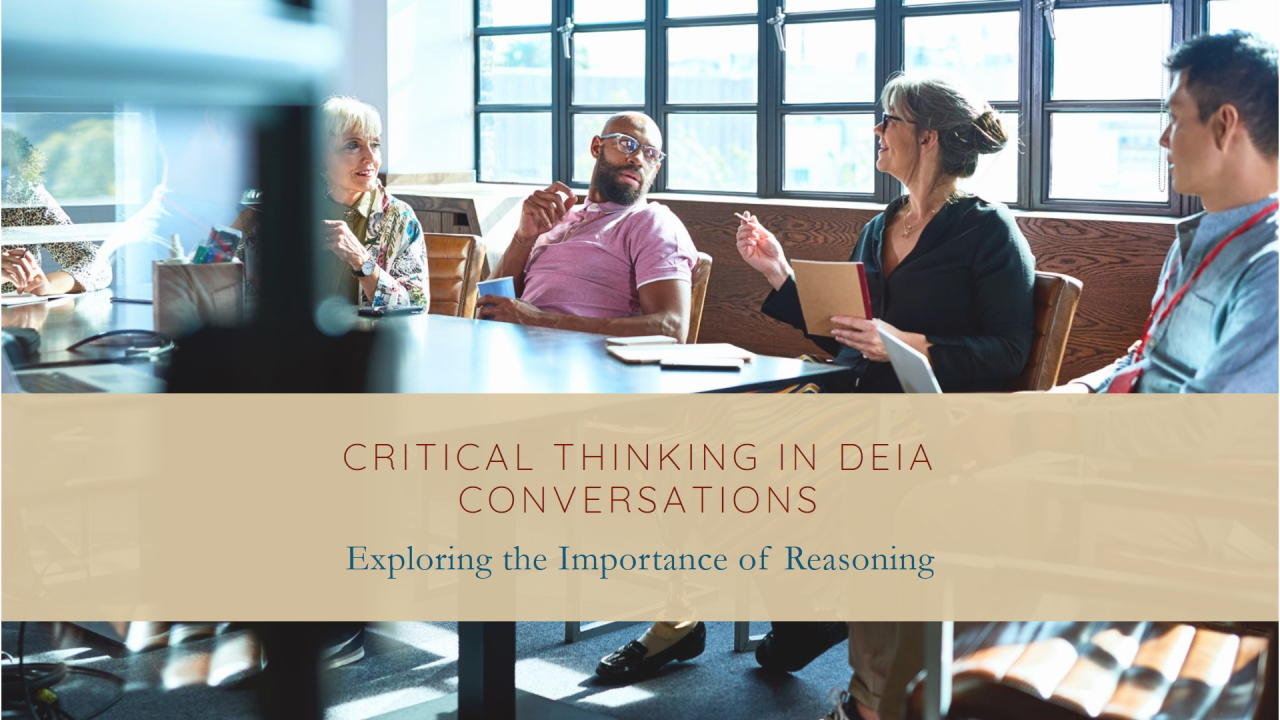
In today’s digital world, misinformation spreads faster than ever, and the Diversity, Equity, Inclusion, and Accessibility (DEIA) space is not immune. While you may have good intentions when sharing information online, it is crucial to be cautious about circulating unverified or misleading data. A recent narrative claims that it is acceptable to cancel DEIA because White women have been the primary beneficiaries. Let’s take a moment to think critically about this claim: Have White women benefited from diversity initiatives? Weren’t they supposed to benefit? Who else has benefited from DEIA interventions? What is the purpose of presenting this data now? Misinformation and Its Impact Two years ago, a statistic circulated online suggesting that over 70% of Chief Diversity Officers were White, while only about 4% of DEIA leaders were Black. However, this data was widely debunked by DEIA industry experts. Here’s why: The data lacked credibility – The source was unknown, unverified, and unreliable. There was no transparency regarding the methodology, sample size, or demographic breakdown. Ambiguous job titles – It was unclear whether the term “Chief Diversity Officer” was implicit or explicit in the dataset. Divisive propaganda – The statistic seemed to serve as a tool to create division in the DEIA industry along racial and ethnic lines. Repetition of misleading figures – Notice how the 4% statistic has resurfaced, attached to a different but similarly misleading claim. The Danger of Spreading Misinformation It is essential to scrutinize the sources of information before resharing. Even if a statistic comes from a seemingly reputable entity, such as the U.S. government, we must evaluate its accuracy and context. For example, consider these common misinformation trends: Claims that Supplier Diversity, Gender Diversity, and Disability Inclusion are not part of DEIA work. ( False – they are integral to DEIA.) Assertions that Civil Rights laws originated from DEIA efforts . ( False – DEIA work stems from Civil Rights legislation, not the other way around.) The Anti-DEIA Strategy: Sowing Confusion Bad actors have a vested interest in undermining DEIA efforts by fostering chaos and misinformation. Their strategy is to overwhelm us with conflicting narratives, making it difficult to discern fact from fiction. Let’s not contribute to this confusion by blindly sharing content that has not been verified. Moving Forward Thoughtfully As advocates for diversity, we must be intentional in how we engage with and share information online. Here are some best practices: Verify the source before posting any statistic or claim. Examine the intent behind the data – Is it meant to inform or to divide? Think critically about how your engagement can shape public perception of DEIA work. Uplift truth by sharing accurate, well-researched, and contextualized information. It’s okay to slow down and take the time to fact-check before engaging in discussions. Controlling the narrative means ensuring it is rooted in truth, not reactionary misinformation. Let’s be responsible stewards of DEIA work and protect its integrity by prioritizing accuracy and thoughtful discourse.
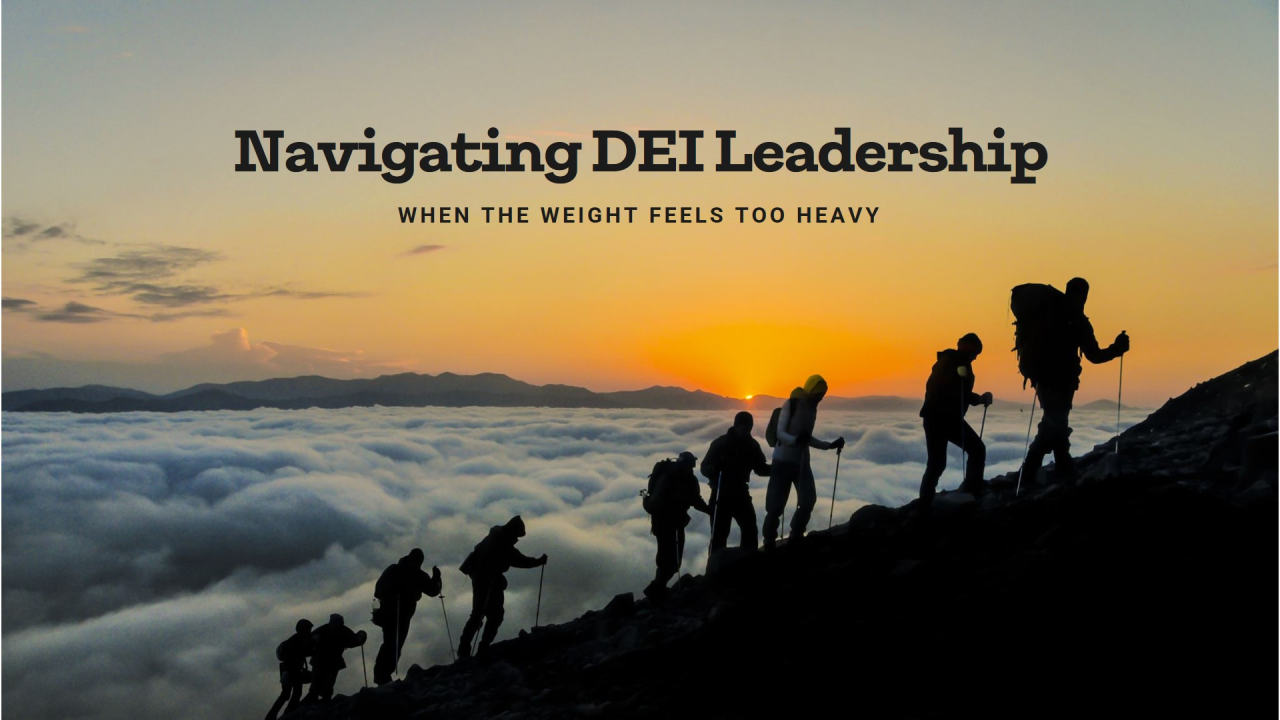
The world of Diversity, Equity, and Inclusion (DEI) work is often challenging, rewarding, and deeply personal. When external factors, like societal tensions or political climates such as those during the Trump administration, amplify the weight, it can feel overwhelming. The responsibility to drive meaningful change, combined with the broader issues facing the world, can make it seem like the weight of the world is on your back. Here’s how to keep pushing forward, even when the load feels too heavy: 1. Reconnect with Your "Why" Your "why" is your anchor. Why did you start this work? What impact are you striving to create? Reflect on your initial motivations and the lives you’ve already impacted. Celebrate small wins—each one contributes to a larger wave of change. 2. Create a Support Network DEI work is not meant to be done alone. Build relationships with like-minded professionals who understand the challenges. Engage with Communities of Practice or join forums where you can share ideas, vent frustrations, and find encouragement. Lean on trusted colleagues, mentors, or friends who can offer advice or a listening ear. 3. Set Boundaries to Avoid Burnout Your well-being is critical to sustaining the work. Learn to say no when your plate is too full. Carve out time for rest and recovery—schedule self-care as non-negotiable. Delegate tasks where possible and trust others to share the load. 4. Stay Informed, but Don’t Overload While it’s important to understand political and social developments, constant exposure to negativity can drain your energy. Schedule specific times to consume news, and then step away. Focus on credible sources and actionable insights rather than sensationalized narratives. 5. Focus on What You Can Control The enormity of systemic change can feel daunting, but change starts with small, actionable steps. Identify areas where you can make the most immediate impact. Develop tangible goals and celebrate milestones along the way. Remember, progress—even incremental—is still progress. 6. Ground Yourself in the Present When the weight feels unbearable, ground yourself in the here and now. Practice mindfulness techniques such as deep breathing or meditation. Take a walk, spend time in nature, or engage in a hobby you love. Remind yourself that challenges are temporary, but your work leaves a lasting legacy. 7. Lean Into Hope and Resilience DEI work is inherently about creating hope for a better future. Reflect on the resilience of marginalized communities who have fought for equity before you. Visualize the future you’re helping to create—a workplace and world where equity and inclusion thrive. 8. Keep Learning and Growing Challenges often present opportunities for growth. Take courses, attend workshops, or read books that reignite your passion and sharpen your skills. Collaborate with others to explore innovative strategies to overcome barriers. 9. Celebrate the Collective Impact You are not alone in this journey. Recognize the collective power of DEI advocates worldwide. Focus on the ripple effect—every step you take contributes to a larger movement for change. 10. Remind Yourself: You’re Human, Too You cannot pour from an empty cup. Acknowledge that it’s okay to feel tired, frustrated, or even defeated at times. Seek professional support, such as therapy or coaching, if the weight feels too heavy to bear alone. Conclusion The road to equity is neither straight nor easy. The weight you carry is a testament to your courage, passion, and commitment to justice. While the challenges of DEI work and the broader world can feel overwhelming, remember that your efforts matter. Take it one step at a time. Lean into your community. Focus on your impact. And most importantly, know that you are never alone in this fight. Together, we will continue to push forward and create a brighter, more inclusive future.
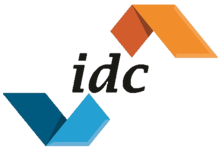
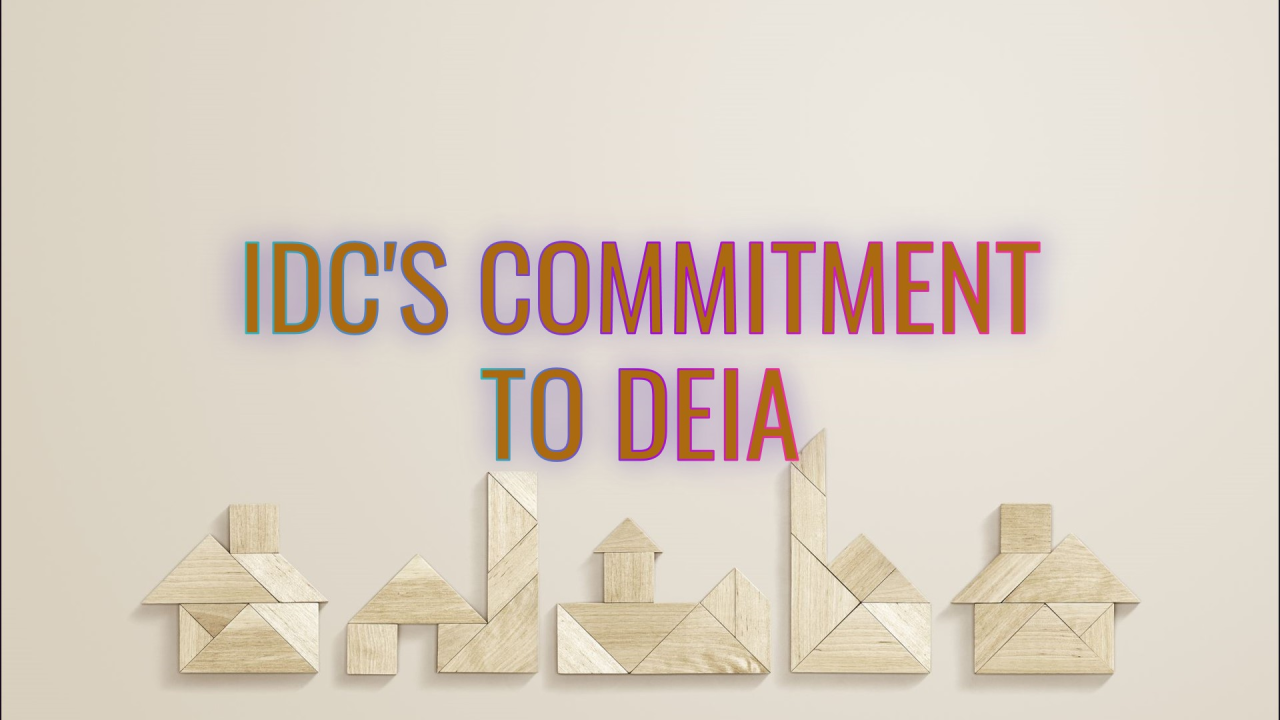
Share On: